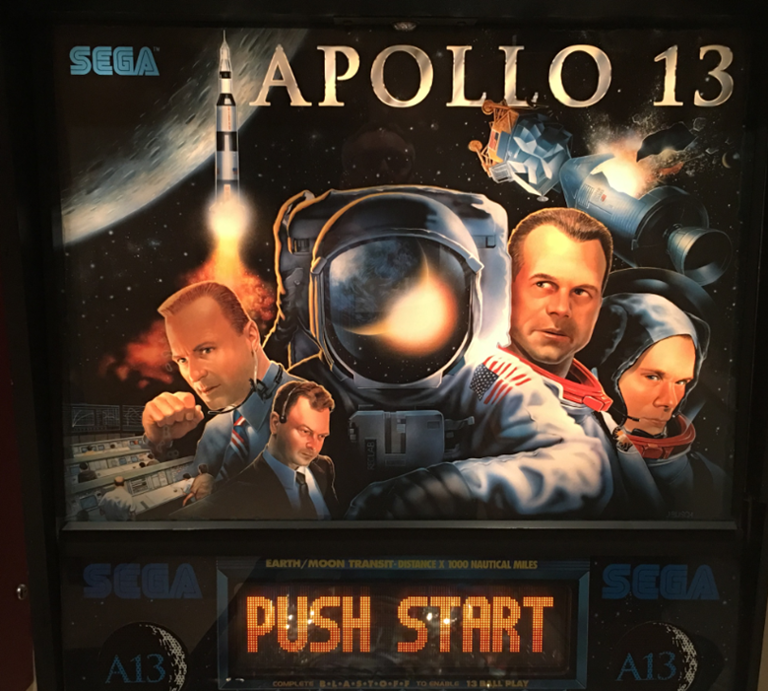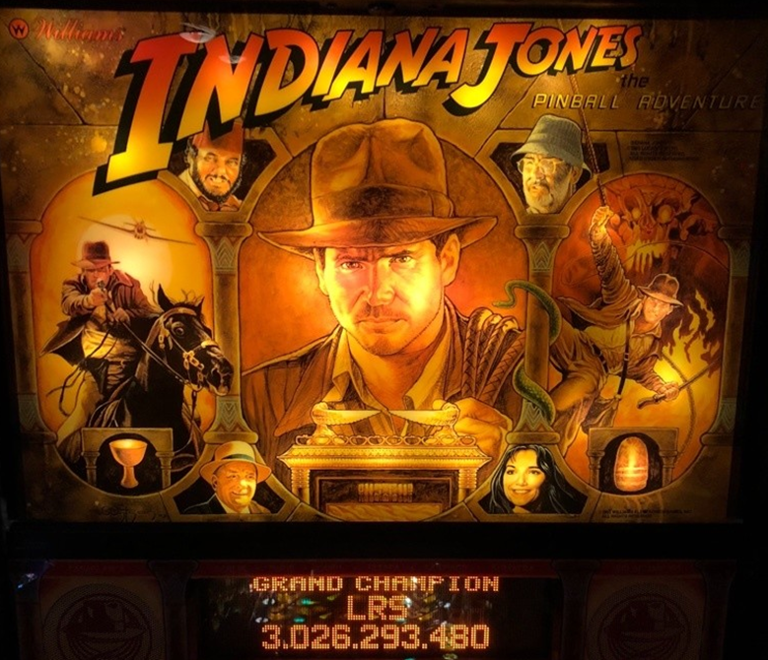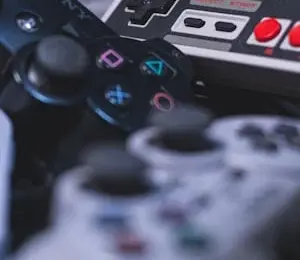I recently had the pleasure of visiting Flippermúzeum. From the outside, it appears to be a small, modest location, but once inside you quickly realise that you have actually arrived at something quite special: Europe’s largest collection of playable pinball machines.
Tucked away on Radnóti Miklós utca in Budapest, the exhibition is a dream come true for any pinball enthusiast, boasting over 120 pinball machines from throughout history. Once you’ve paid admission, any working machine out on display is playable for free, and there are machines here to suit every kind of player: simple bagatelles (that are the forerunners of pinball as we know it), mechanical classics, plenty of movie-licensed electronic novelties, and even a few relatively new machines (yes, they still make them).
As someone interested in games, I’ve always been fascinated by pinball. They exist in this weird nexus point between being incredibly simple to play and yet complicated to understand. Every arcade worth their salt had some, and while home game consoles have put most physical arcades to the sword, for my money nobody has really yet been able to recreate the joy of physical pinball in the home.
That is to say, I could talk a lot about pinball. But, as fun as that might be, it’s not necessarily what you come to this blog for, so instead I’ve got an angle. A history lesson, and hopefully some takeaways.
So... Here’s why all of your team projects are exactly like pinball.
I hope you like metaphors.
Your Team Members Are The Balls
The one essential component of any good pinball machine is… Balls. If you’ve never had the pleasure of pinball, here’s how it works: You thrust a ball into a playing field, whereupon it bounces around on a number of obstacles and targets, always rolling towards a drain at the bottom.
Here lies our first point of comparison. When you put someone onto a project, they behave in the exact same way – maybe with a little more aim, but broadly speaking, they’re going to hit some targets, hit some obstacles, and eventually, they’ll be done.
Pinball machines first started to gain popularity in the 1930's in America, as a cheap form of entertainment during The Great Depression. Early games were inspired by 16th century French games that allowed you to fire balls at holes and bounce them off pins on fairly large boards, but had been iterated and improved upon by the late 1800's to include spring launchers and fit on a smaller table top. Crucially, the games became coin operated in 1931, allowing business owners to profit in a struggling economy. They were cheap to play, but yielded lots of money if you had enough punters. In those days, the only control you had was to launch the ball as desired and the rest was up to fate.
Flip it
Most pinball machines we think of nowadays give you a little bit more control over the outcome, by giving you control of flippers: Little arms near the bottom that you can flick in order to send the ball back up into the melee. In the pinball world, these were first introduced in Gottlieb's Humpty Dumpty (1947), but refined by games like Just 21 and Spot Bowler (1950) into the flippers we know and love today. If you manage a project, or lead a project in any way, you are the one controlling the flippers.
Most pinball skill is about lining up flipper shots, and so too is project management about trying to set a team member in the right direction – towards the targets, and away from obstacles. Depending on how adept the player is, you can even hit targets that disable other obstacles, making more targets easier to hit.
Another way that flippers are like project leaders is timing. A good flipper shot is all about timing, and being in the right place at the right time when the ball needs direction. If you’re in a position to lead, you need to be available when someone needs you in order to maintain effectiveness and not have to start that person up again.
Multiball
One of the primary challenges of pinball is keeping track of ball position, which is often obscured or made difficult by complicated switches, rails, caves, and hidden tracks. Any pinball player will attest that these alone can be difficult to master.
In 1980, a company called Williams (who had previously made huge strides in pinball during the 30's by introducing tables that used electricity) released Firepower, which is a classic table. It was the first to include a new concept, since adopted by almost every table, which makes this challenge exponentially harder: Multiball. And of course, most teams aren’t one person (or in our metaphor, one ball).
Multiball brings a level of unprecedented chaos to proceedings – simultaneously allowing you to hit a greater number of targets while also making your job as a player much, much harder. In addition to the targets, you’ll also be hitting more obstacles. Rather than keeping track of one ball, you now need to keep track of several.

1995’s Apollo 13 table (released by Sega) has my own personal favourite multiball function, because it launches 13 balls at you. That's the highest number of balls at once I’ve ever seen, and it is frankly a ludicrous number of balls. This madness highlights another lesson: You want enough balls to hit your targets, but not so many that it becomes a chaotic, overwhelming, hilarious mess.
Amazon’s Jeff Bezos has a rule that a team should always be able to be fed by two pizzas, dubbed the “Two Pizza Rule” by some. Here’s my rule, “The Multiball Rule”: For every person (ball) you add to the team, your level of chaos increases exponentially. Every team should be comprised of how many balls you’re prepared to juggle.
“The Multiball Rule: For every person you add to your team, your level of chaos increases exponentially…”
Volatility
Try as we might, another lesson pinball can teach us is that even though we try things with the best intentions, and aim our best, sometimes we miss. Pinball playing fields are volatile – full of bumpers and kickers and slingshots that bounce the ball away at high speed, branching paths and routes, and challenges. We cannot ever hope to control exactly where every ball goes, and nor should we: Project leadership needs to be able to react to the unexpected, the blockers that you hit accidentally, and the targets that you don't manage to hit.
This is also a good reminder about the way in which we aim to plan for projects, and a +1 for any methodology which allows you to be flexible. You cannot plan exactly how a pinball run will go, and often times, you don’t know what will happen when you hit one of the targets. Several schools of thought have sprung up around this exact problem, and it might be something worth bearing in mind the next time you see a prescriptive project plan everyone is expected to stick to.
In pinball, there is always a possibility of getting a great score as long as you can keep the balls in play. The same holds true for projects – having balls available you can use, either in reserve or in-play, means you always have another chance adjust your aim and try again. But depending on how your organisation is run, once they’re gone, they’re gone. So take stock of whether you’ve hit targets before you allow the team to disband.
Reporting
And how will you know that you’ve hit your targets? Some will be obvious, but for an accurate picture, you’ll need some sort of tracking.
In the 70’s and up to present day, microprocessors and circuit boards allowed pinball games to transcend beyond something purely mechanical and electrical, and opened up the realm of digital machines. These machines use computers, essentially, to power additional features. One incredibly common feature is to have a dot-matrix display, mounted in the backglass. This lets you, the player, know exactly how you’re doing – sharing your score based on targets you’ve hit, and sometimes listing active objectives.

Every team needs this sort of tracking in order to truly know whether things are going well. Think about how you run your projects: Where is your display, and how accurate are the scores you keep?
Tilt
Skilled players will know that sometimes, pinball machines can be subtly nudged to get better results. I believe that the art of gentle nudging is an essential tenant of project leadership, too.
Pinball machines have built in mechanisms that prevent excessive nudging, known as “tilt”. Using one of a few methods of detection, any bump that the game deems cheating will typically lock the flippers and maybe even end your turn, forcing you to accept your current score.
Your team probably has defense mechanisms of their own. That’s why any nudging you do needs to be gentle and considered, if you want to reach outcomes that work for everyone. Push people too much, and their performance will be severely impacted.
Maintenance
After a turbulent road of ups and downs, the last pinball boom was early in the 1990’s, a time that produced incredible movie-licensed tables like Indiana Jones. But by the end of the decade, the comeback was over, and pinball found itself where it is now: Living life as an expensive, hobbyist activity, with seldom few refuges in the public to find and play new tables. 1999’s Star Wars: Episode 1 table sold only 3,500 units.
Since then, although new tables have been produced, the massive drop in popularity has made maintenance of pinball machines increasingly difficult. It is a wonder and a marvel that Flippermúzeum is able to maintain so many machines in such good condition given the rarity of certain parts.
Pinball tables need love, and so too, do the processes you operate within. So make sure that your teams are making time for caring for the internal workings, and maintaining the standards that you need in order to operate. Otherwise, you won’t get to play at all. This can mean making sure systems are documented, and spending time refining the tools that make your own lives easier.
The Future
Pinball will live on, in some form or another. Whether through digital recreations of classic tables, or brand new innovations, the format will continue to evolve, and I personally hope we’ll one day see new pinball machines appearing in more businesses and social spaces again.
But in the mean time, I’m be thankful for places like Flippermúzeum, that ensure these treasures of old are still available in some ways for enthusiasts to enjoy them. To remind us of the fundamentals, and exactly how we got here. And to experience the joy of these machines simply for what they are.
In the project management space, there’s a lot of noise these days, on Twitter, LinkedIn, at events, and everywhere in between. But sometimes we need to step back and appreciate the basics. Sometimes we need to find a different angle.
Sometimes, we just need to insert a coin and push start.


